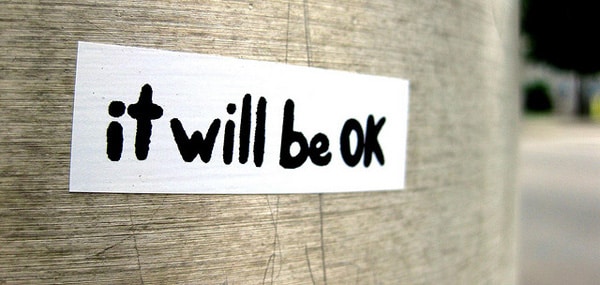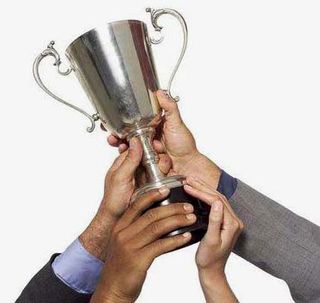As a kid, I always dreamt of becoming a tennis player. Little did I know that as an adult I would be sitting in the player’s boxes as part of the entourage for current world number one, Novak Djokovic, the flamboyant Marat Safin, and some of the other top players in the world.
Being around professional tennis at the highest level, I am convinced that it is undoubtedly one of the toughest sports there is, challenging both the mind and the body to the very extreme. Two warriors face each other in a lonely battle that sends the loser packing, while the winner will see himself encounter a new opponent eager to defeat him, in the next round.
With no time limitations, a match can continue for hours, allowing unthinkable twists and turns that leave a match open for surprise, until the last point has been completed.
The sport requires incredible stamina and focus in order to enjoy sustainable success, which is probably one of the main reasons that so many celebrities and high-profile business personalities admire the game’s top names.
Throughout the years, as I’ve studied success on and off the court, I have found that there are five things that separate the best in the world from the rest. The great thing is that every single one of us can implement these 5 things into our lives, and become our own champion. Let me share these with you:
1. Top performers are optimists:

You can put most top tennis players on a golf course, in front of a table tennis table, or a tennis court, and they will try their very best to win. They are competitive, but more than that, they believe. The challenges give them joy and reaffirms their self belief.
At the same time, they also understand one fundamental principle: as much as they want to win, they are well aware that they will also experience setbacks… no matter how good they are.
This is especially so in tennis, where even the very best lose on a regular basis, due to the fact that there can only be one winner at each tournament. To add more salt to the wound, tennis allows for bizarre outcomes, such as having won more points than the winner but losing the match. Nevertheless, the next tournament is around the corner, and therefore quick recovery is crucial. This is why the speed of recovery usually determines the longevity of success, influencing self belief, the ability to learn from setbacks, and of course future performance.
I have witnessed world-class players suffering for months from painful losses, and at times never fully recovering. Sadly, it is usually these players who also struggle to build momentum from glorious victories. The opposite often holds true for the top performers who recovery quickly from disappointments, as it is these individuals who know how to truly build on past successes as well. Building long-lasting confidence from big wins, while coping swiftly with setbacks, is what really distinguishes the true champion from the very good.
So how do they do it? The answer is simple, and can be applied by anyone. It is what Martin Seligman, the founder of positive psychology calls “explanatory style”. The very best enjoy real challenges, as they build momentum from victories, by explaining to themselves consciously or unconsciously how they have been responsible for such results, and how they are empowered to continue the ride. At the same time, they see setbacks as fleeting learning opportunities, and nothing personal.
In other words, it is the lens from which we view events and the perspective from which we interpret them that makes all the difference. By introducing a more positive and optimistic attitude, we give ourselves the opportunity to grow from setbacks, while using wins as the building stones for sustained success. In either case, we win.
2. Top performers act with a sense of urgency:

I remember when Novak Djokovic came to play my event in Thailand. He was 17 years old, and this was only his second main draw of an ATP event. However, he came with a team of three people: his coach, a fitness trainer, and a physio.
To most people, it seemed quite amusing that an unknown rookie had a bigger entourage than some of the big stars. However, the truth is that his team was a reflection of the determination of a young boy who did not want to waste any time to fulfill his dream of becoming the best tennis player in the world.
Becoming a world-class tennis player sounds like a dream profession to most. And it is. You travel the world, compete in a wonderful sport, have people pay to watch you do what you love doing anyways, and live the life of a celebrity.
However, it comes at a price. Tennis players need to learn to delay gratification at an age, where most kids don’t even know what these words really mean. This is unless they were part of the marshmallow study, in which young kids were given a marshmallow, but asked to control their urges for 15 minutes, in order to get some bonus marshmallows. The finding of that study was that kids that were able to resist the temptation did better in various areas of life, many years later.
In sport, time is not money, it is more than money, as the career span is usually shockingly short. This is especially so in tennis, if you consider that the average top 100 men’s player is 28 years old, giving them an even shorter lifespan of peak performance.
Most stars succeed to make their breakthrough much earlier, and if they can sustain their success, they will enjoy exponentially more success and income than the rest of the pack. However, in order for them to enjoy such early success, they need to be willing to give up some of the joys of normal teens.
The takeaway here is that in order to enjoy great success, we must be aware of the price we are willing to pay, and learn to delay short-term pleasures in order to achieve longer lasting and more significant moments of joy and satisfaction.
3. Top Performers are surrounded by a winning team:

When Andy Murray finally decided he had to make some kind of change to win a Grand Slam, I was appointed to engage the services of the former Champion, Ivan Lendl. Murray already had a great team that saw him enjoy many big wins, including becoming the world’s second best tennis player on the ATP rankings.
However, he sensed he needed some additional guidance to get out of his current deadlock of being the best player who had never won a Grand Slam. The collaboration between Murray and Lendl worked extremely well, helping Andy to become a two-time Grand Slam champion. It is hard to say what the exact impact of his former mentor was, all that mattered was that it makes the difference.
Murray’s collaboration with Lendl also triggered a new trend amongst top players: From Djokovic (Becker) to Federer (Edberg), Nishikori (Chang) to Cilic (Ivanisevic), many of the world’s best players were seeking to upgrade their games with the help of an experienced mentor. They all realized that a good team can generate the winning edge to sustainable success. After all, it is the people you surround yourself with, who can really push you to the sky, or pull you down to the gutters.
On that note, I also observed how the very best tennis players enjoy stable romantic relationships, as well as a small circle of close friends. The ability to choose the right people around you, and enjoy energizing and nurturing relationships can make all the difference.
This is why I value social skills as among’st the most important virtues any person can learn. In any case it is desirable for any aspiring high performer to have some kind of coach and mentor who guides and supports us, side by side to close friends and partners, who believe in our abilities to be successful.
4. Top Performers have unique rituals:

In 2011, Novak Djokovic had one of the most remarkable years in tennis history. He won three out of four Grand Slams, and seemed invincible. In that year, many people spoke about his special gluten-free diet, as his secret recipe to success. However, the truth was that the diet only represented the tip of the iceberg of the rituals that turned Djokovic into one of the fittest and mentally strong competitors out there.
The thing is that we human beings are creatures of habit. What we do regularly turns into an effortless habit, and it is the culmination of these habits that determine our success. For example, if we spend our free time watching television, we drain our energy, and our ability to focus. Contrast this with the habit of meditating, which will strengthen our ability to focus, regulate our emotions and will generally make us feel better. Your choice.
However, there is no quick fix: Athletes train all life long, to perform at their best at a select few events: For some, this may be every four years at the Olympics, while for tennis players it is at the Grand Slam events. Their goal is to perform best, when it matters most.
Unfortunately, performance usually does not work at the whim of a button, as many experience the hard way. Rather, it is the result of a lifestyle that includes being fully present and focused at each practice session, and at each professional match, as a result of empowering daily rituals.
5. Top Performers give themselves time to recover:

Top athletes are known to push themselves to their limits. In fact through they understand that stress and pressure allows them to stretch their skills and capabilities in the same way we grow muscles. What is less known is that the very best performers also understand how to use moments of calm to recover. This is required at different levels.
For example, in the book The Power of Full Engagement, Jim Loehr and Tony Schwartz describe how they observed how the very best tennis players use the 20-25 seconds between points to disengage from the match, switch off as much as possible, and give themselves time to breathe deeply and recover their bodies and mind. These few seconds between each point can give them a huge competitive edge later in the match.
Schwartz and Loehr also propose that athletes should train like sprinters, and not like marathon runners. This idea can be applied to our general work, where it really makes sense to work in blocks of say 90 minute sessions, after which we take short breaks to recover. A short walk or even some simple breaching exercises can make the difference between feeling productive and suffering from burn out.
Of course, recovery is equally important from a macro-perspective. The tennis season stretches itself throughout almost the whole year, and due to the short career span, every injury is a serious professional setback. This is why the top athletes of the likes of Nadal, Federer and Djokovic are extremely careful when planning their schedule, ensuring that they include specific times for recovery and preparation.
They all have their hobbies, like for example playing golf that allows them to switch off from tennis during the year. Most importantly though, they schedule regular time outs from tennis, and especially during the off-season, in which they literally refuel their batteries for the upcoming season.
The lesson here is that sometimes less is more: In order to perform our best, we need to take regular time outs throughout working day (i.e. every 90 minutes a short break), week (i.e. one day a week in which we switch off completely) and year (i.e. short breaks every 3 months). As JP Morgan once said, I can do a year’s work in 9 months, but not in 12 months.
So, that’s it. As a recap, top performers:
Are optimists
Act with a sense of urgency
Are surrounded by a winning team
Have unique rituals
Give themselves time to recover
These simple things can separate you from the pack and will ultimately lead to the breakthrough you yearn for.
So what do you think of this post? Please share your thoughts with me by writing it down below.